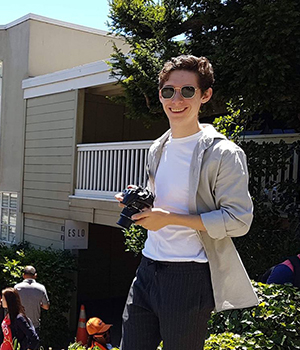TV advertising is becoming more accessible
TV advertising in the UK has come a long way since it began in 1955, with Gibbs SR promoting the tingling freshness of their toothpaste on the newly created ITV – a rival to the BBC, and the first commercial channel in the UK. Fast forward 67 years and TV is still as popular as ever, being at the forefront of many brands’ media campaigns. But for some advertisers TV is still a largely untapped market, with perceptions around cost and creative requirements often cited as barriers to entry. However, this could all change in the near future with the move towards self-served, programmatically bought TV advertising space.
Eliminating these barriers to entry could make TV advertising more accessible to many smaller brands who may have previously been priced out, allowing these brands to tap into the host of benefits that TV advertising has to offer. When used effectively, TV can create long-lasting brand trust and fame, and can do so better than any other channel on your media plan.
In 2021, TouchPoints reported that linear TV and broadcaster VoD makes up 33% of the average UK adult’s media consumption each week, so by not advertising on TV we may be restricting paid media reach by as much as a third across all adults. TV becomes even more significant for the 65+ age group where, according to TouchPoints, TV makes up over 50% of consumed media each week.
Not only is TV full screen, sound on, highly immersive video content, but it has some of the highest completion rates of video. Thinkbox recently reported this at between 90%-97% (compared to YouTube, which sits at around 50%). TV is exclusively viewed by humans (no threat of click bots here) and is often a shared viewing experience – meaning ads are reaching more than one individual within the same household at the same time. TV advertising sits alongside high-quality programming which ensures brand safety. Viewers can trust the brand with this stamp of quality and credibility. In fact, Ad Nation reported in 2016 that TV scored as the most trusted source of advertising with 42% of participants trusting the medium. This sat well above the next highest channels with newspapers at 13%, websites at 9% and radio at 8%.
TV is also the backbone to ad-driven profit growth. ThinkBox found that TV delivered 71% of total advertising-generated profit over three years with TV currently commanding 54% of the average advertising budget. This means that TV advertising is a lower-risk ad investment with the highest likelihood of profit return (70% likelihood over three-six months and 86% over three years).
It is also worth bearing in mind that TV advertising is excellent at complementing other media channels, both online and offline – including during the viewing of an ad thanks to multi-screening (using another device such as a mobile or tablet during TV viewing). In fact, multi-screeners are more likely to follow up on a TV ad than single screeners, having instant access to a browser on their mobile, tablet or laptop.
It has been proven that campaigns that include TV as part of their marketing mix generate a better ROI than those that use marketing channels that exclude TV. It works particularly well with online media leading to better engagement – as demonstrated by Group M’s ‘TV Response: new rules, new roles’ study (2015):
TV drives a response through several channels directly. It generates a quarter of all media-driven sales delivered via the telephone, 45% of all media-driven sales via bricks & mortar and 29% of media-driven sales through web traffic driven direct-to-site – this includes non-paid-for search.
TV also drives an indirect response through online channels, generating 33% of media-driven sales via paid-for online search; 26% of media-driven sales whose last click is via an online display ad; and a fifth of media-driven sales via affiliate marketing.
TV also has a significant impact on social media activity and is responsible for 33% of all media-driven interactions for brands on Facebook.
Whilst TV is often seen as a platform for brands with the biggest advertising budgets, the introduction of technologies such as Sky Adsmart and Video On Demand has made it easier to become more granular with targeting, reducing costs and limiting wastage.
At Space & Time we offer a host of different growth marketing opportunities across a range of media channels including TV. Please get in touch if you would like to find out more.
Related posts

21.03.24
EVENT: How to overcome e-commerce growing pains on the journey to £5m

07.03.24
Consent Mode and user privacy best practice

07.03.24
GA4 Essential Guide

15.02.22
Prepare to Launch

04.02.22
Meta-morphosis: A Facebook coming of age story

03.02.22

